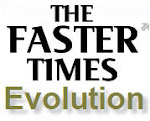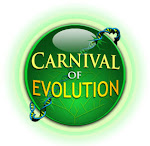 Because of the deputation of workers as caregivers, the assigned reproductive responsibilities of the Hymenopteran queen, and other observed caste-like divisions of labor, eusocial invertebrates such as bees and ants are often presented as the exemplars of group selection theory. However, recent research published in Molecular Ecology suggests that the loyalties and actions displayed by some members of these social groups hint at far more self-centered motivations.
Because of the deputation of workers as caregivers, the assigned reproductive responsibilities of the Hymenopteran queen, and other observed caste-like divisions of labor, eusocial invertebrates such as bees and ants are often presented as the exemplars of group selection theory. However, recent research published in Molecular Ecology suggests that the loyalties and actions displayed by some members of these social groups hint at far more self-centered motivations.The research, conducted using Brazilian stingless bees (Melipona scutellaris), examined the genotypes of approximately 600 bees to ascertain parentage. What the scientists discovered was that more than 20% of the male bees present in the average hive had been the offspring of worker bees - not that of the queen bee. Further, of this 20% of worker born males, 80% had been derived from worker-lineages extending from the previous queen, not the matriarch currently holding the throne! This means that not only are about a quarter of the hive’s males being propagated by workers, but they also seem to be exceeding the average lifespan of the other queen-rendered bees by about three times, and they are actively carrying on the tradition of unauthorized reproduction.
Minimally stated, the idea of group selection holds that the ebb and flow of a group’s gene pool is determined by the benefit of specific alleles rendered to the group as a whole; this as opposed to a gene pool being composed of a conglomerate of genes beneficial only to the individual members therein - or to the genes themselves. Said somewhat differently, group selection contends that the individual members of a group (species, nest, hive, etc…) may sacrifice their own individual fitness, if such sacrifice would be advantageous to the assembly of individuals viewed as a single unit.
In haplodiploid critters, such as the currently discussed bees, benefit to the hive is obtained via a caste system in which workers choose to help raise the queen’s offspring (their sisters) instead of actively reproducing themselves. Kin selection, generally thought of as the antithesis of group selection theory (though, the theories aren’t necessarily exclusive), explains the eusocial dynamic by means of a gene centered perspective. This view justifies the sacrifice of workers through demonstrating that the genes present within the workers can be amplified in the gene pool if they promote the success of their sisters over that of their own young. This because workers have a higher degree of relatedness (i.e. share more genes) to their sisters than to their own offspring.
As stated on page 7 of the paper, “…the greater reproductive rate of workers derived from a superseded queen is also consistent with kin selection theory, given that it pays workers more from exploiting the colony if costs are carried by less related individuals.”
At any rate, it also turns out that the bees from this study are not only being produced from lines other than the current queen’s, but they also contribute nothing to the hive in terms of labor or work – they get a free ride…
From page 8; “These results are the first explicit demonstration that conflict over male parentage in insect societies is not just played out between the queen and workers and between the workers of one generation, but that the conflict may also spill over from one worker generation to the next.”
ALVES, D., IMPERATRIZ-FONSECA, V., FRANCOY, T., SANTOS-FILHO, P., NOGUEIRA-NETO, P., BILLEN, J., & WENSELEERS, T. (2009). The queen is dead-long live the workers: intraspecific parasitism by workers in the stingless bee
Molecular Ecology DOI: 10.1111/j.1365-294X.2009.04323.x





























No comments:
Post a Comment